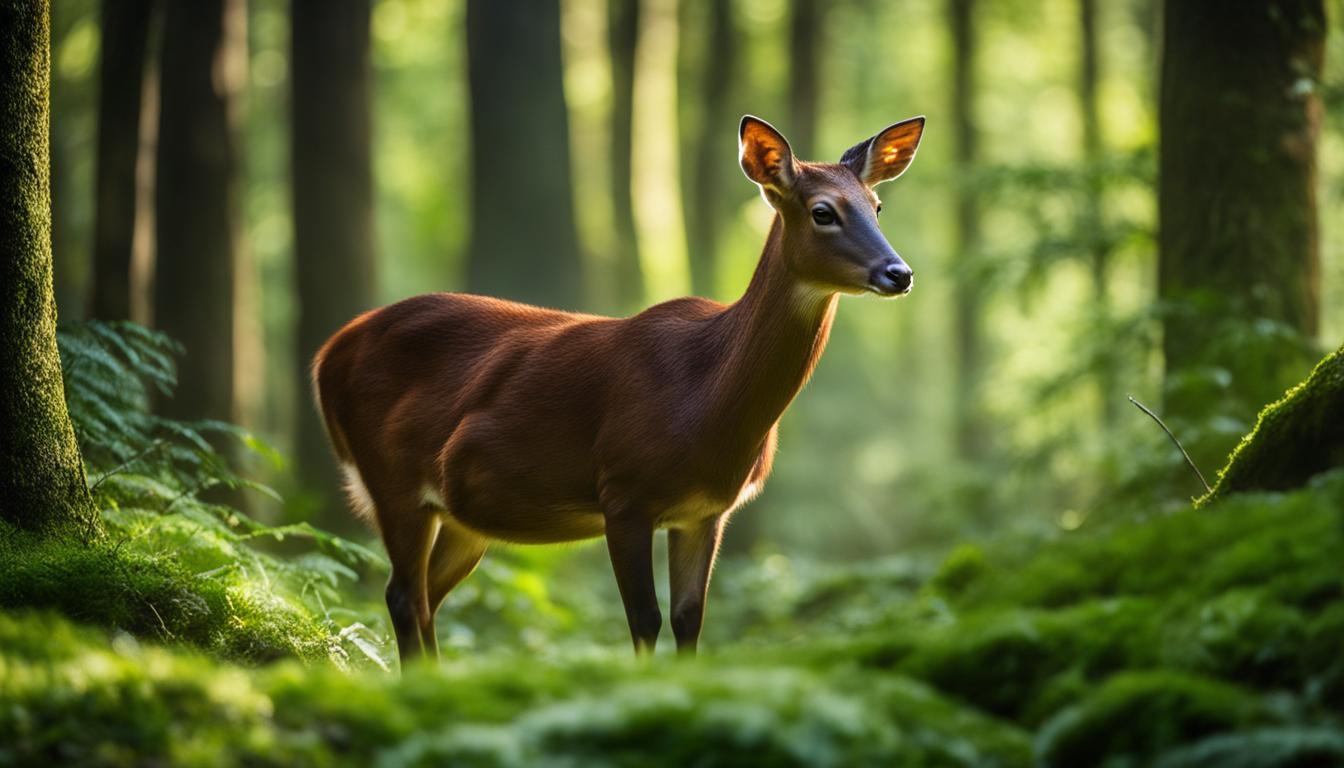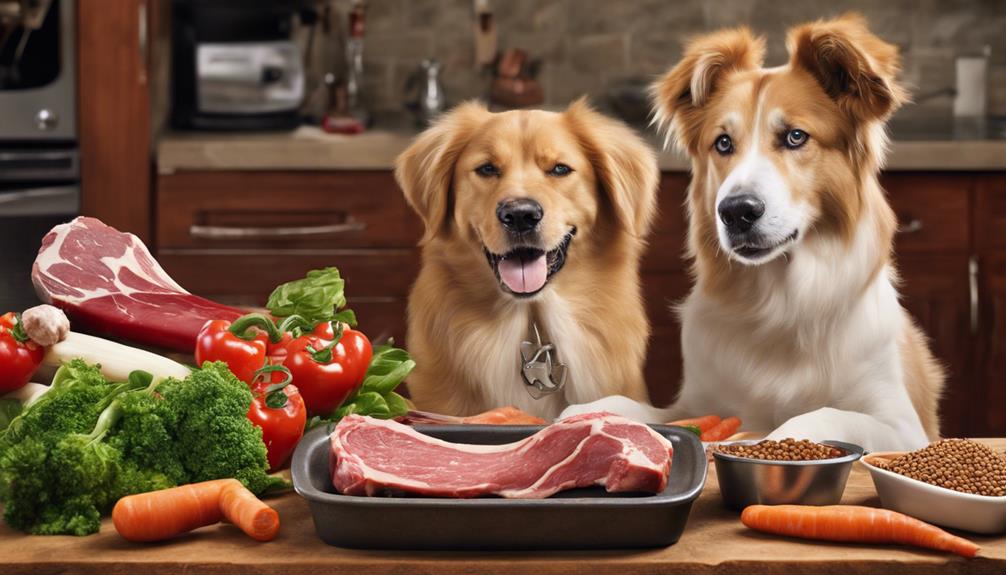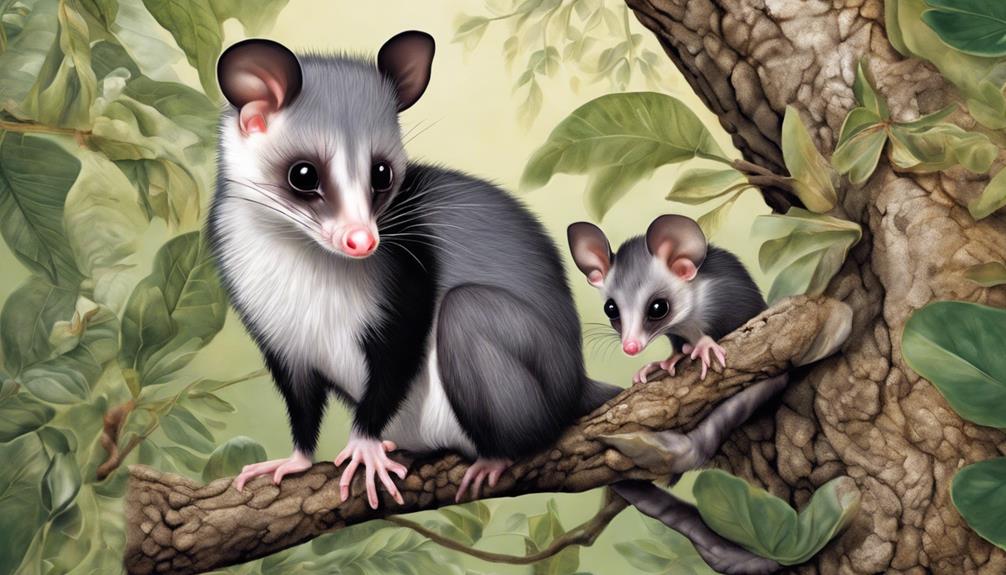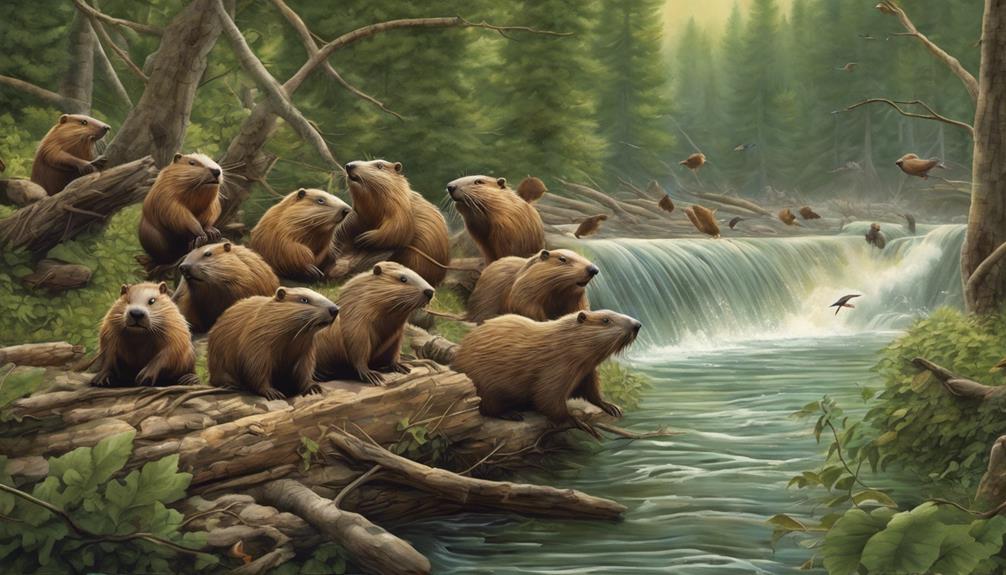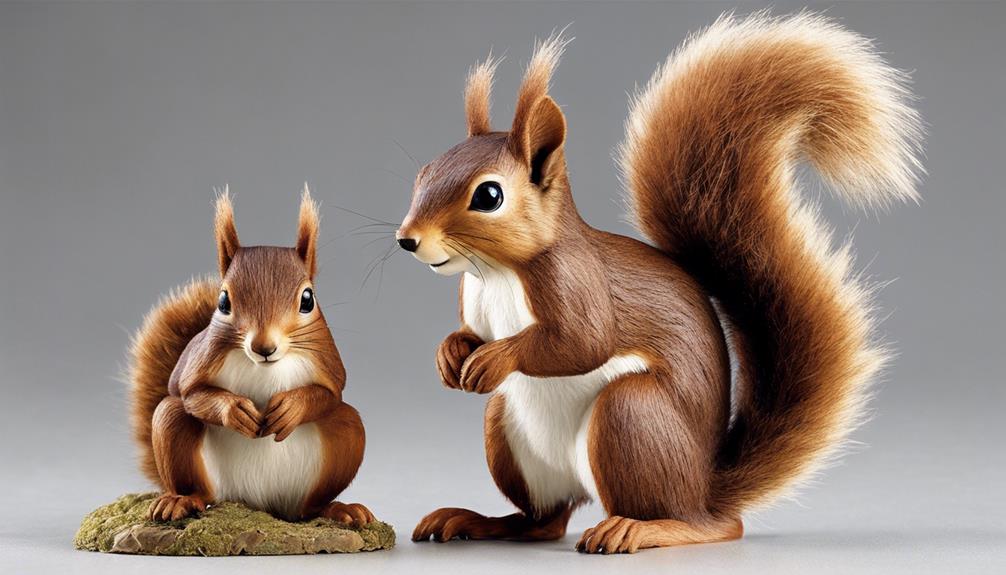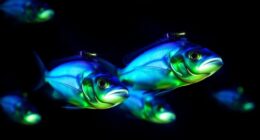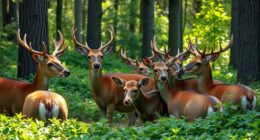Were you aware that the muntjac deer, commonly referred to as the “barking deer,” are among the smallest species of deer globally? Despite their size, these captivating creatures have successfully adapted to different habitats throughout England and portions of Wales, presenting distinct challenges for conservation endeavors.
Key Takeaways:
- Muntjac deer, also known as “barking deer,” are one of the smallest species of deer in the world.
- They have adapted to various habitats in England and parts of Wales, including deciduous woodland and urban areas.
- Muntjac deer are active throughout the day and night, with peak activity at dawn and dusk.
- Conservation efforts focus on managing the population to control their spread and minimize damage to habitats and plants of conservation importance.
- Gardeners and conservationists should be aware of the potential impact of muntjac deer on woodland regeneration and plant biodiversity.
Description and Size of Muntjac Deer
Muntjac deer, also known as Muntiacus reevesi, are small, hump-backed deer that exhibit unique characteristics. With a shoulder height ranging from 45 to 52 cm, these petite deer are slightly larger than a fox. They sport a stunning ginger pelage adorned with dark stripes on their faces, giving them a distinct appearance. Male Muntjac deer possess short, slightly hooked antlers that grow on long pedicels.
Muntjac deer weigh between 10 to 17 kg for males and 9 to 16 kg for females. Their average lifespan in the wild is approximately 10 years for males and 13 years for females. However, when kept in captivity, male Muntjac deer can live up to 16 years, while females have been known to surpass 20 years of age.
Habitat and Distribution of Muntjac Deer
Muntjac deer, also known as barking deer, are adaptable creatures that can thrive in a variety of environments. Their habitat range includes deciduous woodland, conifer plantations, urban areas, gardens, and even railway embankments. They typically prefer areas with a good understorey and thick cover, providing them with ample shelter and food sources.
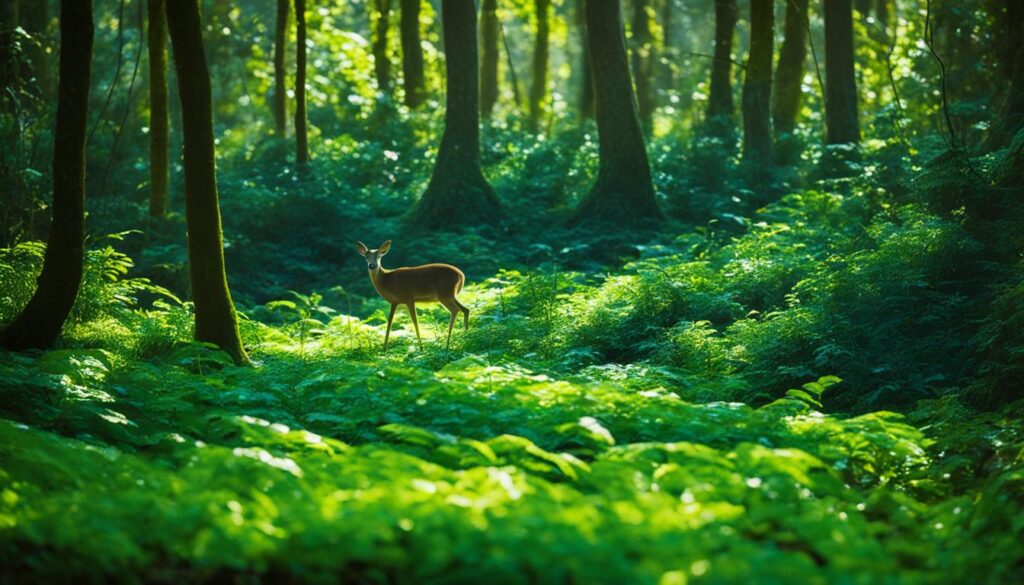
Originally native to the Hainan region in China and Taiwan, muntjac deer were introduced to Woburn Park in Bedfordshire, England in 1894. Since then, they have spread throughout SE England and can now be found across England and parts of Wales. While their distribution north of the Humber is patchy, muntjac deer have also been observed in Scotland and Northern Ireland, albeit in smaller numbers.
To summarize:
| Habitat of Muntjac Deer | Distribution of Muntjac Deer |
|---|---|
| Deciduous woodland | England |
| Conifer plantations | Wales |
| Urban areas | Scotland |
| Gardens | Northern Ireland |
| Railway embankments |
Muntjac deer have proven their ability to adapt to different environments, making them a successful and widespread species across the United Kingdom. However, their distribution still exhibits some regional variances, especially in more northern areas. Through continued observation and conservation efforts, we can continue to appreciate the unique habitat preferences and distribution patterns of these fascinating creatures.
Diet and Feeding Habits of Muntjac Deer
Muntjac deer have a diverse diet consisting of various plant species. They primarily feed on shoots of shrubs, woodland herbs, garden plants, and berries. Among their preferred foods are bramble and raspberry.
Muntjac deer have been observed feeding on up to 85 different plant species, showcasing their adaptability and ability to utilize a wide range of food sources. However, this adaptability can sometimes lead to challenges in conservation areas.
“Muntjac deer are known to cause damage to important wild flowers such as bluebells, primroses, and orchids, particularly in woods of conservation interest.”
Muntjac deer are active feeders and can adapt their diet based on the availability of food sources in their habitat. Their feeding habits play a significant role in shaping the ecosystem and influencing the vegetation composition in certain areas.
To get a more comprehensive understanding of the diet and feeding habits of Muntjac deer, refer to the table below:
Note: The table below provides a detailed breakdown of the Muntjac deer diet based on available research and observations.
| Food Source | Percentage |
|---|---|
| Shrubs | 28% |
| Woodland herbs | 22% |
| Garden plants | 18% |
| Berries | 12% |
| Other plant species | 20% |
Note: The percentages in the table represent approximate proportions based on available data.
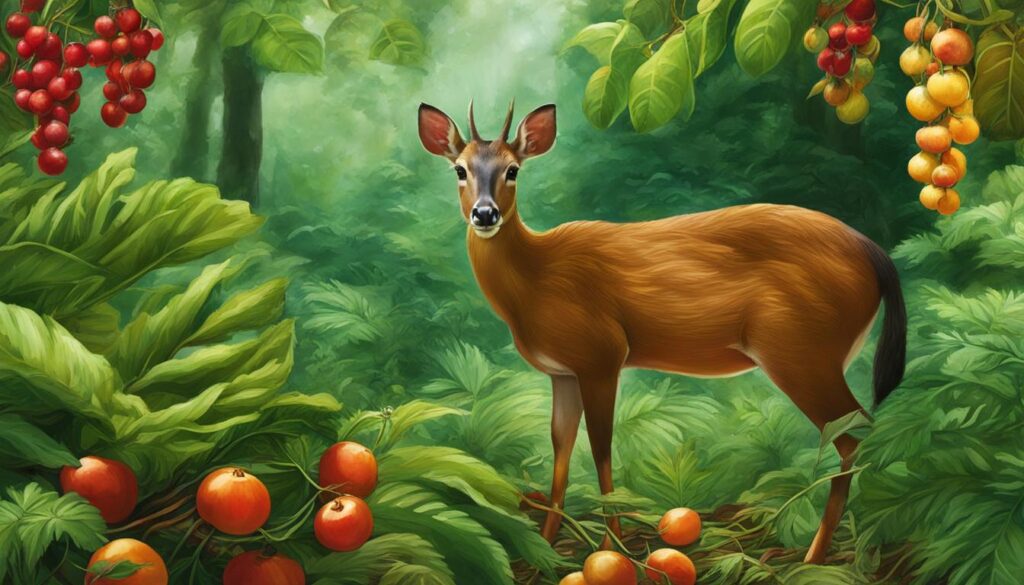
Behavior and Reproduction of Muntjac Deer
Male muntjac deer exhibit territorial behavior, marking their exclusive core areas with scent from glands on their forehead. Females, on the other hand, tend to tolerate each other more. Unlike other deer species in Britain, muntjac deer do not form herds but are commonly found either in solitary individuals or in family groups consisting of a doe and her fawn.
Muntjac deer are known for their unique breeding patterns. They have the ability to breed all year round, unlike many other deer species. After giving birth, does can conceive again within just a few days. The gestation period for muntjac deer lasts approximately 210 days, and usually, does give birth to a single fawn.
| Behavior | Reproduction |
|---|---|
| Male muntjac deer are territorial and mark their exclusive core areas with scent from glands on their forehead. | Muntjac deer breed all year round, and does can conceive again within days of giving birth. |
| Females tend to tolerate each other more and are often found in family groups consisting of a doe and her fawn. | The gestation period for muntjac deer lasts approximately 210 days. |
| Muntjac deer do not form herds but are commonly found either in solitary individuals or in family groups. | Usually, does give birth to a single fawn. |
Threats and Conservation of Muntjac Deer
Muntjac deer, although not known to cause significant damage to agricultural or timber crops, can be a concern for gardeners and conservation woodlands. In high densities, they have the potential to prevent woodland regeneration and damage plants of conservation importance. Moreover, muntjac deer are often involved in deer vehicle collisions (DVC) and account for a significant portion of reported DVC in England.
As a non-native species, the population of muntjac deer is managed through culling to mitigate their spread and reduce habitat damage. Controlling the population helps to minimize the impact on the environment and maintain the delicate balance of ecosystems in which they reside. Since 2019, it has been prohibited to release muntjac deer into the wild in England and Wales without a license, further safeguarding against potential disruptions to the ecosystem.
Efforts are also being made to raise awareness about the threats posed by muntjac deer and promote conservation initiatives. By educating the public about the importance of maintaining a balanced wildlife population and implementing responsible practices, we can contribute to the preservation of these unique creatures and their habitats.
| Threats to Muntjac Deer | Conservation Measures |
|---|---|
| Damage to plants of conservation importance | Population management through culling |
| Prevention of woodland regeneration | Licensing system for releasing muntjac deer |
| Deer vehicle collisions | Awareness campaigns and education |
Note: This table presents an overview of the threats to Muntjac deer and the conservation measures undertaken to safeguard their population and habitats.
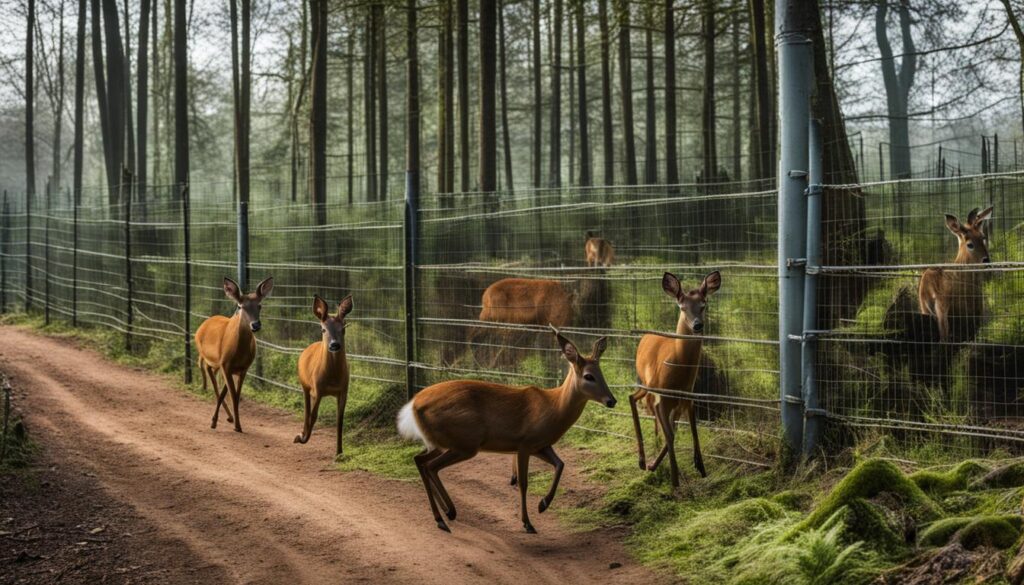
Identification and Field Signs of Muntjac Deer
Muntjac deer are easily identifiable by their distinctive features. They are small in size and have a hump-backed appearance. Their fur is ginger in color, and they have dark stripes on their face. Males have short antlers and distinctive tusks that protrude just below the lip.
When it comes to field signs, there are a few key indicators to look out for. Muntjac deer have small hoof prints, measuring around 2.5 cm in length. These prints can help differentiate them from other deer species. Additionally, their droppings are similar in shape to other deer species but are smaller in size.
One notable field sign of muntjac deer is their tail. They have a short tail that is typically held up to show a white underside when alarmed. This behavior can serve as a useful visual cue for identifying muntjac deer in the field.
Muntjac Deer Identification Features:
- Small size
- Hump-backed appearance
- Ginger fur with dark stripes on the face
- Males have short antlers and tusks
Muntjac Deer Field Signs:
- Small hoof prints, approximately 2.5 cm in length
- Droppings similar in shape to other deer species, but smaller
- Short tail held up to show a white underside when alarmed
The combination of these identification features and field signs makes it possible to confidently identify muntjac deer in their natural habitat.
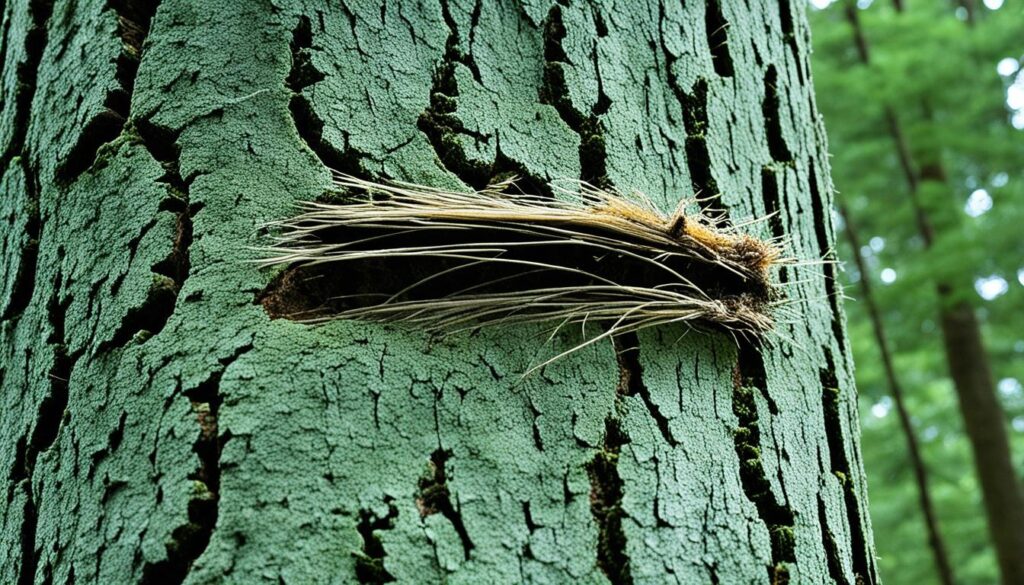
| Identification Features | Field Signs |
|---|---|
| Small size | Small hoof prints |
| Hump-backed appearance | Droppings similar in shape to other deer species, but smaller |
| Ginger fur with dark stripes on the face | Short tail held up to show a white underside when alarmed |
| Males have short antlers and tusks |
Interesting Facts about Muntjac Deer
Showcasing unique characteristics and behaviors, muntjac deer are fascinating creatures. Here are some interesting facts about these remarkable deer:
- Muntjac deer are known as the “barking deer” because they vocalize in various situations, including making a repeated and loud bark.
- In addition to barks, muntjac deer communicate with squeaks, which play a role in their social interactions.
- Males have pronounced downward black lines on their face, adding to their distinctive appearance.
- Active throughout the 24-hour period, muntjac deer are most active at dawn and dusk when they are more likely to encounter their preferred food sources.
- With adaptability to open spaces during the night, muntjac deer can navigate a range of habitats.
- While muntjac deer are generally solitary, they can be found in pairs or family groups, with bucks defending exclusive territories.
- In contrast, female muntjac deer overlap with other females, displaying a more tolerant social structure.
These intriguing characteristics set muntjac deer apart and contribute to their unique place in nature.

Conclusion
Muntjac deer, a small and unique species native to China and Taiwan, have successfully adapted to various habitats in England and parts of Wales. With their distinct appearance, including ginger pelage and dark stripes on the face, and unique behavior, such as males marking their territories and females giving birth to a single fawn throughout the year, these deer have captured the attention of nature enthusiasts.
Despite their adaptability and widespread distribution, the conservation status of Muntjac deer is classified as least concern. However, their population is actively managed to control their spread and minimize habitat damage. It is essential for gardeners and conservationists to be aware of the potential impact of these deer on plants and woodland regeneration, especially in areas of conservation interest.
As we continue to learn more about the Muntjac deer and their role in their ecosystems, it becomes increasingly important to strike a balance between their presence and the preservation of delicate habitats. By understanding their behavior, conserving their natural habitat, and implementing appropriate management practices, we can ensure the continued coexistence of these fascinating animals with other species and maintain the ecological balance in our natural landscapes.
